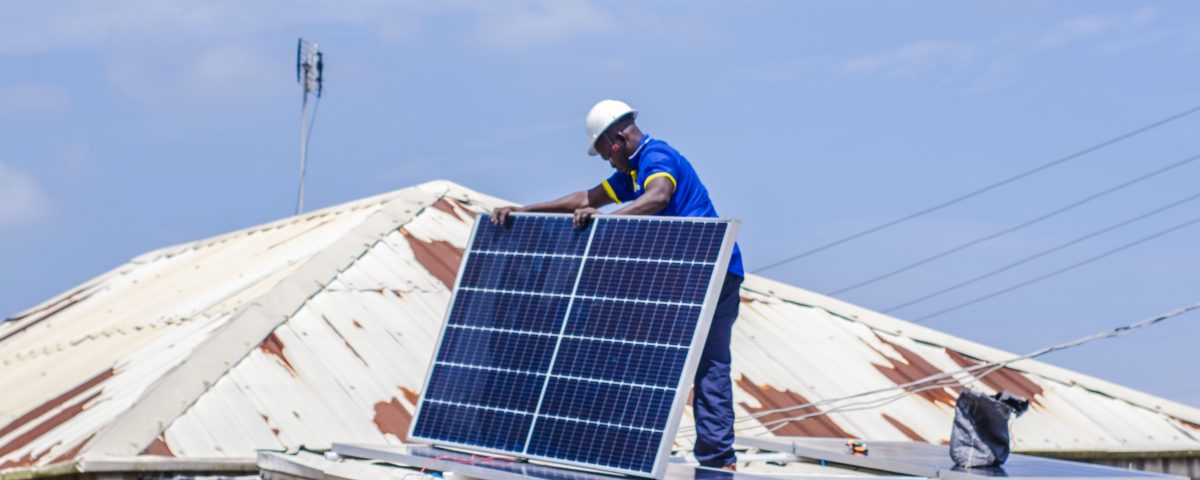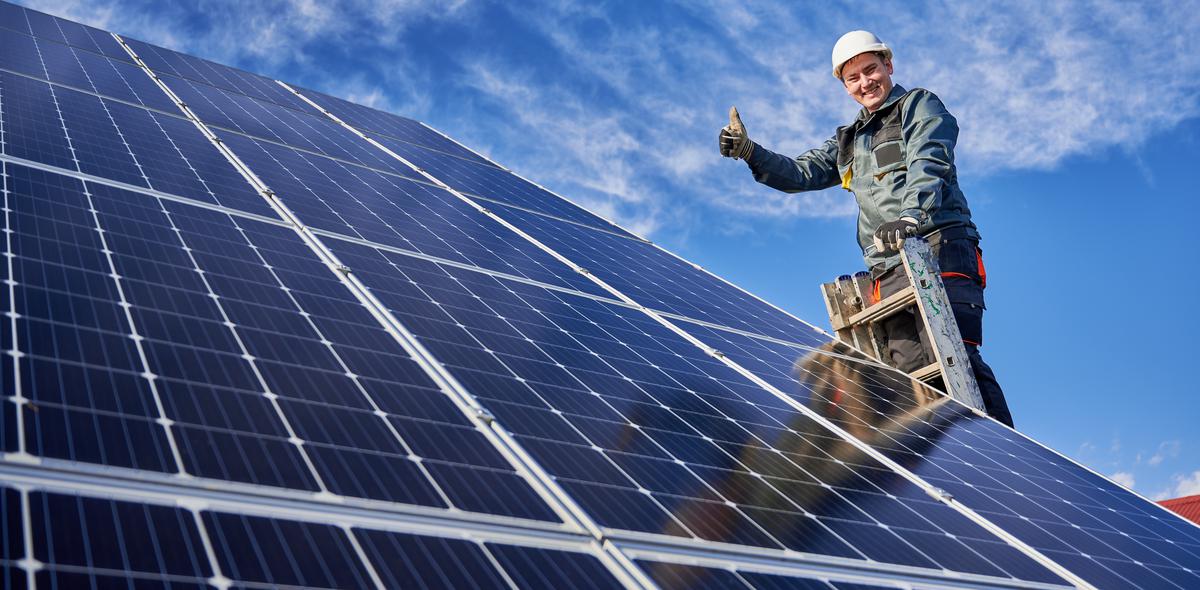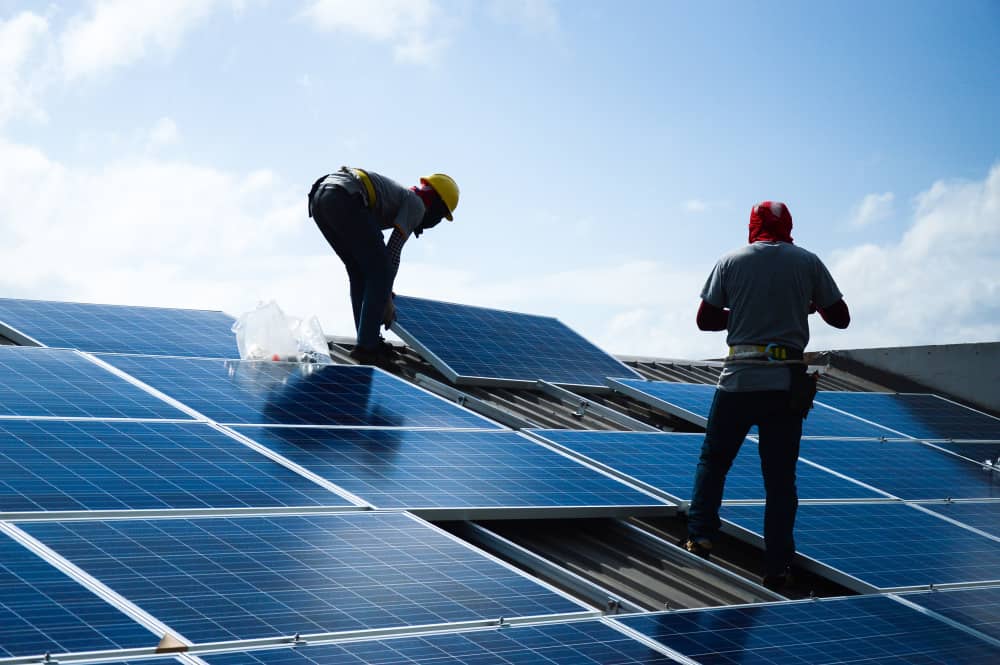Are you thinking about switching to clean energy and wondering how solar power installation works? You’re not alone. More homeowners than ever are choosing solar panels to cut their electricity bills and reduce their environmental impact. Getting solar panels installed on your home might seem complicated, but understanding the process can help you make smart decisions about your residential solar installation.
Why Solar Power Installation Makes Sense Today
The solar industry has changed dramatically over the past decade. Solar power installation costs have dropped by more than 70% since 2010, making it affordable for average homeowners. Today’s solar panels are more efficient and last longer than older models, typically coming with 20-25 year warranties.
Financial Benefits of Going Solar
When you invest in solar panel installation, you’re essentially buying decades of electricity upfront at today’s prices. Most homeowners save between $1,000 and $1,500 per year on their electric bills after going solar. Over the lifetime of your system, these savings can add up to $20,000 to $50,000 or more.
The federal solar tax credit allows you to deduct 30% of your solar installation costs from your federal taxes. Many states and local governments offer additional rebates and incentives that can further reduce your upfront costs.
Environmental Impact
A typical residential solar power installation prevents about 3-4 tons of carbon dioxide from entering the atmosphere each year. Over its lifetime, your solar system will offset the equivalent of planting over 100 trees annually.
Types of Solar Panel Systems
Before moving forward with solar power installation, you need to understand the different types of systems available. Each has distinct advantages depending on your situation and goals.
Grid-Tied Solar Systems
Most residential solar installations use grid-tied systems. These systems connect directly to your local electric grid. During the day, your solar panels generate electricity for your home. Any excess power gets sent back to the grid, and your utility company gives you credit through net metering.
Grid-tied systems are usually the most cost-effective option for solar power installation because they don’t require expensive battery storage. However, they do shut down during power outages for safety reasons.
Battery Storage Systems
Adding battery storage to your solar panel installation allows you to store excess energy for use when the sun isn’t shining. This gives you backup power during outages and can provide more energy independence.
Battery systems add significant cost to your solar installation, typically $10,000 to $15,000 for a whole-home backup system. However, they’re becoming more popular as battery prices continue to fall and more areas experience grid reliability issues.
Off-Grid Solar Systems
Off-grid systems are completely independent from the utility grid. These solar power installations require large battery banks and backup generators. They’re typically used in remote locations where connecting to the grid is expensive or impossible.
Planning Your Solar Installation
Proper planning is crucial for a successful solar power installation. Several factors determine whether your home is suitable for solar panels and how much energy your system can generate.
Assessing Your Home’s Solar Potential
Your roof’s condition, age, and orientation significantly impact your solar installation options. South-facing roofs typically generate the most electricity, but east and west-facing roofs can also work well. North-facing roofs in the northern hemisphere generally aren’t suitable for solar panels.
Your installer will evaluate potential shading from trees, buildings, or other obstructions. Even partial shading can significantly reduce your solar system’s performance, so this assessment is critical during the planning phase.
Calculating Your Energy Needs
Look at your past 12 months of electric bills to determine your average monthly energy usage. This information helps size your solar power installation correctly. Most installers recommend sizing your system to offset 90-100% of your annual electricity usage.
Consider any changes that might affect your future energy needs. Are you planning to buy an electric vehicle? Install a pool? Add air conditioning? These factors should influence your solar panel installation size.
Roof Structure and Condition
Your roof must be in good condition before solar installation. If your roof needs replacement within the next 5-10 years, it’s usually best to replace it first. Removing and reinstalling solar panels for roof work later can cost several thousand dollars.
Most roofing materials work well with solar panels, including asphalt shingles, metal roofing, and tile. However, some materials like wood shake or slate can make solar power installation more challenging and expensive.
The Solar Installation Process Step by Step
Understanding what happens during solar power installation helps you prepare and know what to expect. The entire process typically takes 1-3 months from signing your contract to turning on your system.
Initial Consultation and Site Assessment
Your solar installation begins with a detailed site assessment. The installer examines your roof, electrical panel, and property to design the optimal system. They’ll take measurements, photos, and notes about any potential installation challenges.
Modern installers often use satellite imagery and drone surveys to create preliminary designs, but an in-person visit is still necessary to verify the details and discuss your specific needs and preferences.
System Design and Permitting
After the site assessment, your installer creates detailed system designs and engineering plans. These documents show exactly where each solar panel will be placed, how they’ll be connected, and how the system integrates with your home’s electrical system.
Your installer typically handles all permitting requirements for your solar power installation. This includes building permits from your local government and interconnection agreements with your utility company.
Installation Day
The actual solar panel installation usually takes 1-3 days, depending on your system size and complexity. The installation crew will arrive early in the morning with all necessary equipment and materials.
First, they’ll install the mounting system that secures the panels to your roof. Next, they’ll place the solar panels and connect all the electrical components. Finally, they’ll install the inverter and connect your system to your home’s electrical panel.
Inspection and Interconnection
After solar installation is complete, your local building department must inspect the work to ensure it meets code requirements. Once you pass inspection, your utility company will install a new meter and give you permission to operate your solar system.
This final step can take several weeks, as utility companies often have backlogs for new solar power installations. During this waiting period, your system is complete but cannot be turned on.
Costs and Financing Options
Solar power installation costs vary significantly based on system size, equipment quality, installation complexity, and local market conditions. Understanding your options helps you make informed financial decisions.
Average Installation Costs
The average cost for residential solar panel installation ranges from $15,000 to $25,000 before incentives. After applying the federal tax credit, most homeowners pay between $10,500 and $17,500 for their systems.
Cost per watt is the standard way to compare solar installation pricing. Most residential installations cost between $2.50 and $4.00 per watt before incentives. Higher-quality equipment and complex installations typically cost more per watt.
Cash Purchase vs. Financing
Paying cash for your solar power installation typically provides the best long-term value. You’ll receive all available incentives and rebates, and you’ll own your system outright from day one.
Solar loans allow you to finance your solar installation with little or no money down. Many solar loans offer competitive interest rates and terms that still allow you to save money on your electric bills from day one.
Solar Leases and Power Purchase Agreements
Solar leases and power purchase agreements (PPAs) let you go solar with no upfront costs. However, you won’t own the system or qualify for tax credits and rebates. These options typically provide less long-term value than purchasing your system.
Choosing the Right Solar Installer
Selecting the right company for your solar power installation is one of the most important decisions you’ll make. The quality of your installation affects your system’s performance, reliability, and warranty coverage.
Installer Qualifications and Certifications
Look for installers certified by the North American Board of Certified Energy Practitioners (NABCEP). This certification demonstrates technical competency and commitment to industry best practices for solar installation.
Your installer should be properly licensed, bonded, and insured for electrical and roofing work in your area. Ask to see copies of their licenses and insurance certificates before signing any contracts.
Experience and Local Reputation
Choose installers with extensive experience in solar power installation in your area. Local installers understand regional permitting requirements, utility interconnection processes, and local climate conditions that affect system performance.
Check online reviews, Better Business Bureau ratings, and ask for references from recent customers. A reputable installer should be happy to provide references and examples of their work.
Equipment and Warranties
Compare the solar panels, inverters, and mounting systems different installers propose for your solar installation. Higher-quality equipment typically costs more upfront but provides better performance and reliability over time.
Understand what warranties cover your equipment and installation work. Most solar panels come with 20-25 year power warranties, while inverters typically have 10-25 year warranties depending on the type and manufacturer.
Permits and Regulations
Solar power installation requires various permits and must comply with local building codes, electrical codes, and utility requirements. Your installer typically handles these requirements, but understanding the process helps ensure everything goes smoothly.
Building Permits
Most areas require building permits for solar panel installation. These permits ensure your installation meets structural and electrical safety requirements. Permit fees typically range from $100 to $500, depending on your location and system size.
The permitting process can take anywhere from a few days to several weeks, depending on your local government’s workload and review procedures. Some areas have streamlined permitting processes specifically for solar installations.
Utility Interconnection
Your utility company must approve your solar power installation before you can connect to the grid. This process involves reviewing your system design and installing appropriate metering equipment.
Net metering policies vary by utility company and state. Some areas have favorable net metering that credits you retail rates for excess solar production, while others have less favorable time-of-use or wholesale rate structures.
HOA Approval
If you live in a community with a homeowners association, you may need approval for your solar installation. Many states have “solar rights” laws that limit HOAs’ ability to prohibit solar panels, but some restrictions on placement and appearance may still apply.
Maintenance and Long-term Care
One advantage of solar power installation is that solar systems require minimal maintenance. However, some basic care helps ensure optimal performance and longevity.
Routine Maintenance Tasks
Solar panels are essentially maintenance-free under normal conditions. Rain typically provides adequate cleaning, but you may need to rinse them occasionally if you live in a dusty area or have heavy pollen.
Monitor your system’s performance regularly using your monitoring app or website. Most solar installations include monitoring systems that track energy production and alert you to potential problems.
Professional Maintenance
Consider having your solar power installation professionally inspected every few years. Technicians can check electrical connections, mounting hardware, and overall system performance to identify potential issues before they become serious problems.
Keep trees trimmed to prevent shading as they grow. Even small amounts of shade can significantly impact your solar system’s performance, so maintaining clear access to sunlight is important for optimal energy production.
READ MORE:
- What Size Solar Inverter Do I Need? Find the Perfect Fit for Your Solar System
- Why a 4.3KVA Hybrid Solar Inverter for Your Home is the Perfect Energy Solution
- How Does a Solar Inverter Work? A Simple Guide to Understanding Solar Power Systems
Common Solar Installation Mistakes to Avoid
Learning from others’ mistakes can help ensure your solar power installation goes smoothly and performs as expected. Here are some common pitfalls to avoid.
Choosing Based on Price Alone
The cheapest solar installation quote often isn’t the best value. Low-quality equipment or poor installation work can cost you thousands in lost energy production and repair costs over your system’s lifetime.
Ignoring Roof Condition
Installing solar panels on an old or damaged roof is a costly mistake. Address any roofing issues before your solar power installation to avoid expensive removal and reinstallation costs later.
Inadequate System Sizing
Systems that are too small won’t offset enough of your electricity usage to maximize savings. Systems that are too large may not be allowed under net metering rules or may not provide proportional returns on investment.
Skipping the Fine Print
Read your solar installation contract carefully, paying special attention to warranty terms, system ownership, and what happens if you sell your home. Understanding these details upfront prevents surprises later.
Solar power installation represents one of the best investments you can make in your home today. With costs at historic lows, generous incentives, and proven technology, there’s never been a better time to go solar. Take time to research your options, get multiple quotes, and choose qualified installers who will deliver a system that performs reliably for decades.
Ready to start your solar journey? Contact local certified installers to get quotes and begin planning your solar power installation today. Your future self will thank you for taking this important step toward energy independence and environmental responsibility.


